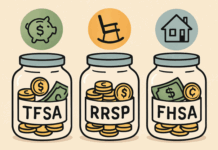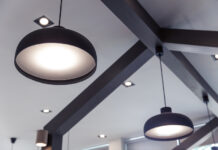
Your roof works hard to ensure everyone and everything under it is protected from the harsh elements of weather. This is why it’s important to schedule regular inspections and maintenance to ensure your roof is in its best condition throughout the year. However, even regular inspection and maintenance schedules aren’t always enough to spot damage and protect your roof. It’s possible for the general home inspectors to miss critical hidden problems, leading to significant damage and costly repairs over time.
If you’re scheduling a roofing inspection anytime soon, you need to know the most common hidden roof damages inspectors mostly miss. Here are a few of these damages you should know about so you can have them inspected in every project.
Invisible Hail Damage
Damage from a hailstorm can be challenging to spot without proper training. This is because the damage is always subtle, smooth, with small, round dents that easily camouflage with the surrounding surfaces, making it difficult to spot. Experienced roofing specialists will not have a problem spotting hidden hail damage, but general home inspectors may struggle. If you’re working with general inspectors, you can suggest they look into these issues to spot hidden hail damage:
-
Underlayment Damage:
Checking the underlayment is important because hail can destroy the material underneath shingles without leaving clear external signs, and creating possible paths for water infiltration.
-
Granule Loss:
When hail strikes and dislodges outer-covering granules from your shingles, the damage might look like dark spots that should be checked more closely. I(f left unattended, this type of damage can accelerate shingle deterioration, exposing you to more risks.
-
Latent Impact Spots:
Inspectors should check for the impact of hail on your roof, which may leave weak areas in shingles that aren’t easily visible. When these weak spots are left for some time, they can become bigger holes, exposing your roof to water damage.
Cracked Sealant and Flashing
Your roof needs sealant and flashing as a solution for directing water away from joints and vulnerable roof areas like skylights, vents, and chimneys. With time, the flashing or sealant may deteriorate or crack, exposing your vulnerable roof areas to potential leaks and water seepage. If you’re conducting a general inspection and inspecting the roof from the ground, you may not easily spot a cracked sealant or flashing from the ground.
If your sealant or flashing fails, it can cause significant water damage over time, such as mold, rot, and other serious roofing issues that can reduce your home’s value. Ensure a thorough inspection is conducted, even if it means climbing up the roof to spot these damages early before the weak points worsen.
Early-Stage Wind Damage
Strong winds don’t have to pull off your shingles and displace them to indicate how bad the wind damage was. More often, you never see visible signs of wind damage in the early stages of attack. Instead, the wind will create entry points for water that you won’t instantly spot until interior damage appears, sometimes a few months later. Your roof inspectors can easily miss the early-stage wind damage signs if they fail to check for such signs as:
-
Loosened Fasteners:
In the early days of wind damage, a careful roof inspection can reveal loosened nails and other types of fasteners, which might not be easily visible from the ground. When fasteners get loose, your roof’s structural integrity can be compromised, exposing it to further damage that can be expensive to fix.
-
Lifted Shingles:
Even the sharpest eyes of an inspector on the ground might fail to spot lifted shingles on your roof because they tend to appear normal from the ground. Lifted shingles occur when high winds break the seal between shingles without completely removing them, making them unable to offer a proper water barrier.
-
Microcracks:
These tiny cracks created by strong winds may not be easily visible from a distance, but are responsible for water infiltration over time.
Ventilation Problems
Even experts can sometimes barely notice external signs of attic and roof ventilation problems, making it challenging to handle these issues until significant damage arises. However, you can ask your inspector to just check whether your vents are blocked, there’s insufficient airflow, or poorly sized ventilation. These ventilation issues can cause significant damage if left unresolved for a long time, hence the need to have them checked every time there’s an inspection.
Don’t allow hidden roof damage to threaten your home’s safety and lead to costly repairs. By reminding your roof and home inspectors to check for these signs, you can help spot them early and solve them when it’s still less costly to do so.
Find a Home-Based Business to Start-Up >>> Hundreds of Business Listings.














































